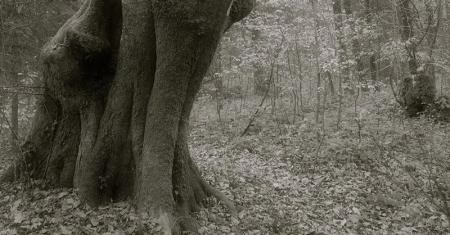
Area characterisation:
Most Swiss inhabitants can reach the forest within 20 minutes on foot, and 80% of the population visit the forest frequently for leisure and recreational purposes. The case area is the forest in the Aargau canton, which occupies an area of around 49,000 ha or 35 percent of the cantonal area. Beech is the most common tree (32%) followed by spruce (26%).
In the Aargau canton where the innovation mechanism (IM) took place, no legal barriers exist for interring human ashes in the forest. The area is also sufficiently close to populated areas to be relevant as a burial site. Cost of burial sites at graveyards are already a private matter to a large degree.
Objective:
This case study from the SINCERE project had the goal to:
- Explore how managing forests for use as spiritual forests could benefit both the forest and the forest owner.
- Raise awareness of the importance of cultural ecosystem services (CES) and motivate forest owners and managers to supply these services and to manage forests appropriately.
- The innovative mechanism (IM) is market-based, and its idea, concept and implementation come from the forest owner.
Potential impacts/benefits:
The provision of cultural forest ecosystem services (FES) is enhanced, and recreational users might acknowledge the benefits of conserved old trees and the modest treatment of the surrounded forest area.
As the exchange here is entirely voluntary and based on use values, the net impact should be a welfare gain for the buyers, who may appreciate the forest more as a burial site for their relatives and as a place to go to commemorate.
A part of this gain is redistributed to the forest owner providing the site and the service, whereas, of course, alternative providers lose this business.
Actions:
This case study introduced market-based offering of burial sites of human ashes near a specific, demarcated tree and thus directed at enhancing cultural ecosystem services of forests.
Forest owners sell burial sites, i.e. ground next to designated trees where next of kin are allowed to bury ashes of a deceased. In return the forest owner will label and conserve the specific tree and the surrounding area for a period of 30-50 years. Formally, the relationship between the seller and the buyer involves a written contract, followed by a direct payment conditional on the forest owner conserving the specific tree and the surrounding forest area as stipulated.
An adapted approach of by establishing a new service, the burial sites, within existing institutions: this allowed the potential market actors related to the terms of trade to request and offer services. Especially with smaller groups of actors and dealing with sensitive issues, new offers can trigger fundamental resistance.
This adapted approach has paved the way for the acceptance of the innovation mechanism (IM), and thus for establishing a new local market.
The concrete outcome is that an increasing number of people choose to bury the ashes of their next-of-kin in the forest burial site rather than elsewhere. The next-of-kin, and in principle everyone who encounter the burial sites/trees, might acknowledge the forest’s role as a provider of cultural services in this form. The forest owner benefits from new sources of income as the opportunity costs of conserving trees and modest silvicultural treatment is compensated through the payment for burial sites.
Transferability of result:
National geographical upscaling: Interment of human ashes is not legal in other Swiss regions and, before considering any upscaling, the underlying legal framework must be in place. Descriptions of the analysed aspects and good practice examples will be beneficial for upscaling.
Upscaling to other schemes: Given the format and focus of the case study, it is not obvious that there are other related existing regulation and instruments in place addressing the same service that may adopt aspects of this Innovation Mechanism (IM).
Upscaling in scope: The current innovation mechanism (IM) have only addressed the option for burials of urns containing human ashes. Coffin burials are often regulated differently or may simply not be allowed outside current designated graveyards. Moreover, the burial service is one of several possible cultural experiences the forests may offer. For example, weddings and baptisms/naming ceremonies may, in many cases, be less regulated but may need some form of supporting infrastructure (tents, baptismal font).
Upscaling to other countries: The underlying legal framework for distributing or interring human ashes might vary from country to country, and conflict with more informal norms and cultural traditions should be examined before implementation. However, similar business models do already exist in several countries: upscaling is essentially already happening and activities like this have been ongoing, e.g., in the UK and Denmark for decades.
Organisations:
NBS goals:
- Restoring ecosystems and their functions
Publications and reports:
Bernasconi, A. 2019. Funeral Forests: Bridges between two worlds Book of Abstracts of the 21th conference of EFUF (European Forum on Urban Forestry), p.54